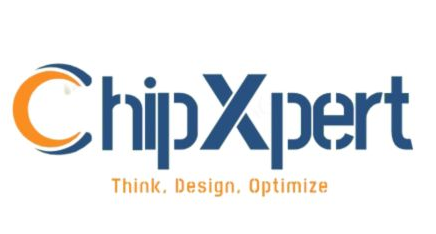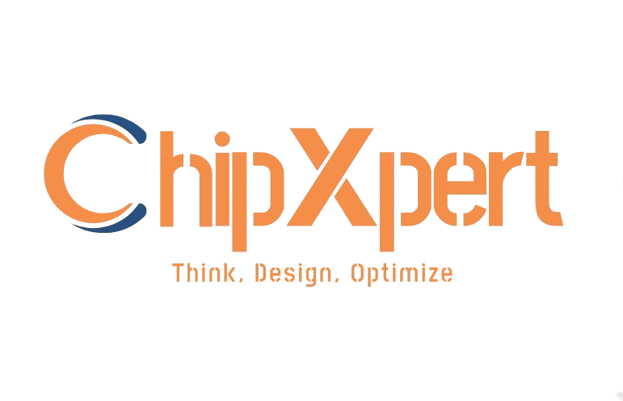Start Your VLSI Career with Industry-Leading Training with
Analog Layout Design Part-Time Course
- Industry Standard Tools
- Course Certificate
- Weekly Mock Interviews
- Assignments After Modules
Start Date
23rd June 2025
Duration
6 Months
Training Type
Online Classes
Course Overview - The Analog Layout Design Part Time course
The Analog Layout Design Part Time course at ChipXpert VLSI Training Institute provides in-depth knowledge of designing high-performance, manufacturable, and reliable analog IC layouts for semiconductor applications. The course covers key concepts such as MOSFET layout techniques, matching principles, parasitic effects, floorplanning, and routing strategies. It emphasizes the importance of device symmetry, common centroid layouts, guard rings, and shielding techniques to minimize mismatch and noise.
With a strong focus on CMOS technology, learners gain expertise in substrate noise isolation, latch-up prevention, and design for manufacturability (DFM). The course also introduces electromigration (EM), IR drop analysis, and electrostatic discharge (ESD) protection strategies, ensuring robust and reliable designs. Advanced layout considerations such as high-speed analog layout, RF layout techniques, and deep submicron challenges are also explored.
Practical learning is a core component, with hands-on training using industry-standard EDA tools for layout editing, DRC, LVS, and parasitic extraction. Real-world case studies and projects provide exposure to layout optimization techniques, helping learners develop a deep understanding of tape-out procedures and foundry processes.
By the end of the course, participants will have the industry-ready skills required to work as Analog Layout Engineers, specializing in custom IC layout design, layout verification, and process technology integration. This program is ideal for those looking to build a career in Analog, Mixed-Signal, and RF IC design within leading semiconductor companies.
Course Highlights
- Exclusively Designed for Working Professionals
- 800+ Hours of Hands-On Training
- Industry-Relevant Projects
- Hands-On Lab Experience
- Training with Industry Standard Premium Tools
- Corporate-Level Communication Training
- Assignments & Assessments After Each Module
- Soft Skills & Weekly Mock Interviews
- Daily Group Discussions
- Foundation Courses Included
- No Cost EMI Options

Course Fee
No Cost EMI Option
Pay After Placement Option
Merit Based Discount Option Upto 50%
Course Delivery Model
- Online Classes Recorded
- Recorded Sessions on elearn Portal
- 24x7 Live WhatsApp Doubt Support
- Hands-On Lab Sessions
Course Duration & Timings
- Duration: 6 Months (Mon-Fri)
- Online (Recorded)
- Support: 24x7 Mentor Assistance
- Placement Assistance : 6 months
Course lessons
- Introduction to semiconductor materials (Intrinsic & Extrinsic)
- Carrier transport mechanisms (Drift, Diffusion, Mobility)
- PN junction, diode characteristics, and applications
- Bipolar Junction Transistors (BJTs) and Metal-Oxide-Semiconductor Field-Effect Transistors (MOSFETs)
- Ohm’s Law, Kirchhoff’s Laws, and circuit analysis
- Biasing techniques and small-signal analysis
- Amplifier basics: Differential, Common Source, and Cascode amplifiers
- Power management circuits and signal conditioning
- Boolean algebra, logic gates, and combinational circuits
- Flip-flops, registers, and sequential circuits
- Setup/Hold time, metastability, and clocking strategies
- Basics of RTL design and timing concepts
- Evolution from Planar CMOS to FinFET
- FinFET structure, advantages, and challenges
- Short-channel effects and power efficiency improvements
- FinFET layout considerations and impact on analog design
- Linux command-line interface and shell scripting
- File operations, process management, and text editing (vi, GVIM)
- Basics of automation and version control (Git)
- Remote access and network operations
TCL & Perl Scripting
- Basics of TCL and Perl for EDA tool automation
- Writing scripts for layout generation and verification
- Automating DRC, LVS, and parasitic extraction
Python Scripting
- Python fundamentals (data types, loops, functions)
- Automating layout data processing and analysis
- Industry-standard Python libraries (NumPy, Pandas, Matplotlib)
- CMOS fabrication process and process node scaling
- Importance of layout in analog and mixed-signal circuits
- Foundry process constraints and PDKs (Process Design Kits)
- Design rules and DFM (Design for Manufacturability)
- Transistor layout optimization for performance and reliability
- Fingered MOSFETs, multi-finger layouts, and dummy devices
- Common centroid layout, guard rings, and noise isolation
- Well Proximity Effect (WPE) and STI (Shallow Trench Isolation) effects
- Parasitic resistance, capacitance, and inductance effects
- Mismatch reduction techniques (dummy devices, symmetric layouts)
- Substrate noise coupling and isolation strategies
- Layout techniques to minimize process variation
- Placement of critical analog blocks (bandgap, differential pairs)
- Power routing, metal layer selection, and IR drop considerations
- Shielding techniques for noise reduction
- High-speed signal routing strategies
- Operational amplifier (Op-Amp) and current mirror layouts
- Precision resistor, capacitor, and inductor layout techniques
- Switched capacitor circuits and charge pump layouts
- High-speed ADC/DAC layout considerations
- Fundamentals of DACs: decoding, interpolation, and filtering.
- DAC architectures: Binary-weighted, R-2R ladder, current-steering, and Sigma-Delta DACs.
- Performance metrics: resolution, linearity, settling time, and glitch energy.
- Design considerations: precision, noise, and bandwidth.
- Fundamentals of ADCs: sampling, quantization, and encoding.
- ADC architectures: Flash, Successive Approximation Register (SAR), Pipeline, and Sigma-Delta ADCs.
- Performance metrics: resolution, speed, linearity (INL, DNL), signal-to-noise ratio (SNR), and effective number of bits (ENOB).
- Design considerations: accuracy, power consumption, and speed.
- Latch-up prevention and deep N-well strategies
- Electromigration (EM) and IR drop analysis
- Electrostatic Discharge (ESD) protection techniques
- Stress effects, thermal analysis, and reliability considerations
- RF inductor and capacitor layout techniques
- Transmission line effects and impedance matching
- Signal integrity and shielding strategies
- Substrate isolation techniques for RF applications
- Running and debugging DRC & LVS violations
- Parasitic extraction and post-layout simulation
- Sign-off procedures and checklist before tape-out
- GDSII format and layout data preparation
- Understanding fabrication and manufacturing processes
- Optical Proximity Correction (OPC) and dummy fill strategies
- Foundry design rules and PDK considerations
- Final layout sign-off for tape-out
- Full custom layout of an operational amplifier
- Precision current mirror layout with matching techniques
- High-speed ADC/DAC layout with parasitic-aware design
- RF inductor and capacitor layout for high-frequency applications
- FinFET-based analog circuit layout challenges and optimizations
Join Us
Who should join this course?
- Specially Deisgned to working Professionals
- Working Professionals from VLSI industry, having some exposure to MOS circuits and who want to switch to Analog Circuit design.
- Working professional doing layout — either IO or analog and would like to switch to circuit design.
- Working Analog Circuit Design Engineers who want to fill the gaps in their understanding & strengthen circuit design concepts to contribute effectively in their current role.
- Faculty working in Engineering Colleges / Universities, teaching VLSI subjects, who would like to get practical exposure to Analog circuit design.
- Qualification
- B.E / B.Tech in Electronics / Electrical / Instrumentation
- M.Tech / M.S in VLSI / Embedded Systems / Electronics / Similar
Payments
- Pay through Debit card/ Credit card/ Net banking/ UPI.
- Avail no cost EMI option with ZERO processing charge from our financial partners. You can choose 6 to 9 months of EMI without paying any additional cost on interest.
Admission Procedure
Step 1: Online Admission Test
Take online test for 90 mins with 60 MCQs. Syllabus includes Aptitude, Digital Electronics, Electronic Devices.
Step 2: Seat Confirmation
Enroll in the course, if selected. Start your preparation by getting access to the pre-requisite materials.

Placement Coordinator
Placement Assistance
At ChipXpert VLSI Training Institute, our Placement Desk is dedicated to bridging the gap between skilled engineers and top-tier VLSI companies. We work closely with both multinational corporations (MNCs) and service companies in the semiconductor industry to fulfill their entry-level hiring needs. Our strong industry collaborations ensure that our trained engineers have access to a wide range of job opportunities.
We offer comprehensive placement assistance as part of our training package. From resume building and interview preparation to arranging direct interviews with hiring companies, our support continues until candidates secure their desired positions. Additionally, we stay in constant touch with recruiters to ensure our students are matched with roles that best suit their skills and aspirations.
Our placement desk also offers personalized guidance for job seekers, including industry-specific tips and insights to help them excel during interviews. Candidates are encouraged to register with the placement desk for dedicated support throughout their job search. For further details or to start the placement process, please reach out to our Learning Advisor.
Have Any Questions
We provide placement assistance by arranging interview opportunities with hiring companies. This is complimentary service from ChipXpert, without charging any extra amount for this. We charge only for our training, but not for placements.
We provide placement support until candidate gets job. To Ensure Successful Placements, We provide added support including mentorship, fundamentals classes, soft skills training, mock interviews Etc.
Salary Range For Freshers Is From 3- 4 Lakhs Per Annum In Service Companies. Salaries In Product/MNC Companies Can Range Between 7 To 16 Lakhs.
Though 3-4 LPA appears similar to software salaries, your real growth comes after 3 years. First 2-3 years are to be considered as career building phase, to learn as much as you can and do not compare with others / IT salaries. Your knowledge will be your power and your career / salary growth from 4th year onwards depends on your talent/knowledge.
Each year many companies visit ChipXpert for recruiting the various entry level positions because of the quality training that we offer.
For complete list of companies visit https://chipxpert.com/view-hiring-companies/
We use 28nm,14nm libraries for labs, projects.
We use the latest and genuine versions of Synopsys Tools for our courses. please check course pages, for the list of tools used for that respective course. We provide a dedicated tool license for every learner during the lab/project work.
This is the biggest advantage with ChipEdge courses, as quality and standard EDA/VLSI tools are important for any VLSI course. And these tools are typically very costly ranging from $50,000 to $200,000 per license per year. Many service companies cannot afford these tools. Thanks to the EDA/Tool companies for giving these tools at subsidized & affordable rates to training companies, so that engineers can get trained on these tools.
We do have installment options for some courses. EMI option is available through our partner organizations, who provide loans for training programs. Please check with our learning advisors.
Why Choose ChipXpert

Online VLSI Lab

Industry Standard Tools
1-1 Mock Interviews

Placement Assistance

24x7 eLearning Access


